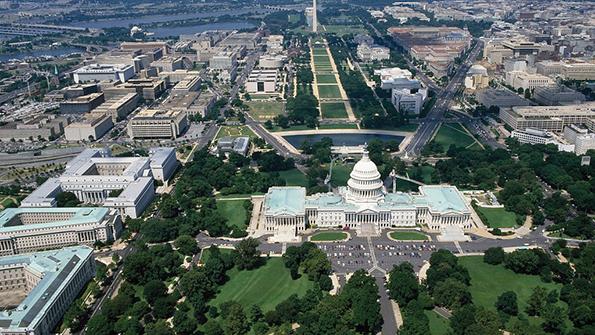
Some of the main talking points on the fiscal 2021 defense budget request and the plan that accompanies it through 2025 are that it aligns resources with the National Defense Strategy and that this year’s budget theme is about all-domain operations. The Pentagon called out priorities to sustain readiness and prepare for future challenges with investment in hypersonics, autonomous systems and artificial intelligence. Given a flat top line, the Defense Department had to make tough choices by making program cuts that have been well-documented and are well-covered by this publication.
The outlines of structural changes in how the Pentagon is preparing for the future are indeed visible in the budget request and plan, but it is unrealistic to expect this budget to have completely framed out all that will be done. Increases in research, development, test and evaluation (RDT&E) spending both in absolute terms and compared to last year’s plan for 2021-24 underscore shifts that are underway. It may take at least 2-3 more years to see how some of these RDT&E efforts translate into new programs and will inform how the U.S. will fight in future conflicts.
Much as defense contractor management, analysts and planners will focus on the details in the defense budget, it is important also to factor in some of the assumptions that underpin the budget—the foundation upon which it rests. Here there are questions worth considering.
The first is the real GDP forecast for 2021-29. The Office of Management and Budget (OMB) forecast depends on stable 3% annual real growth every year, which is well above consensus estimates. The U.S. is now in its longest economic expansion ever. Can this be extended into 2021 or beyond? Possibly. Has the U.S. somehow eliminated the risk of recession from a rapid increase in interest rates, another energy shock, a pandemic or a severe economic crisis in other parts of the world? Very likely not.
Another questionable factor is the new budget and plan’s interest-rate assumptions, as there was a big change from prior projections. The OMB and Congressional Budget Office (CBO) do not disclose how they expect the composition of federal debt by debt maturity to change over forecast periods. They usually provide projections only on three-month Treasury bill interest rates and on the 10-year Treasury note. The U.S. Treasury shows that as of Jan. 31, of the $17.2 trillion in federal debt held by the public, 14% was in Treasury bills with an average interest rate of 1.7%, and 58% was in notes with maturities of 2-10 years at an average rate of 2.1%.
Net interest outlays are a mix of the interest the federal government pays to public holders of that debt and the interest it pays to itself on debt held in federal trust funds. One way to think about the debt burden and the interest expense associated with it is to take the net interest outlay projections and divide them by the total debt the OMB or CBO estimates.
One of the changes the OMB made in its budget projections was to lower interest rate estimates. In recent years, these projections were too high compared to prevailing market levels, as the OMB and CBO both projected rates would return to “normal” levels. In the OMB’s mid-session review from this past summer, the implied interest rate (net interest outlays divided by total debt) was 2.3% in 2019 and rose to 3.0% by 2022 and 3.3% by 2025. In the latest budget and plan, the implied rate is flat—at 2.1% in 2020, creeping up to 2.3% by 2025.
This is another questionable factor that could weigh on the foundation of the defense spending plans. If rates do move to higher levels, then outlays will compete with other forms of federal spending. If rates fall further than projected, it may be due to a far weaker economy, which in turn weighs on federal deficits.
A final questionable factor is the deficit projections themselves. The Trump administration again plans reductions in non-defense discretionary spending, which Congress has not supported in the last three budget requests. The share of non-defense discretionary outlays as a percent of total outlays drops to 12% in 2024 from 15% in 2019.
For defense contractor management, planners, analysts and investors, foundations on which the budget plans are based imply that the structural and programmatic changes in the 2021 budget could be accelerated if deficits and interest rates are higher than the plan presumes. Like a high-rise building built to code in an earthquake zone, the Pentagon’s structural and spending changes may make defense better able to withstand future macroeconomic tremors and shifts.


